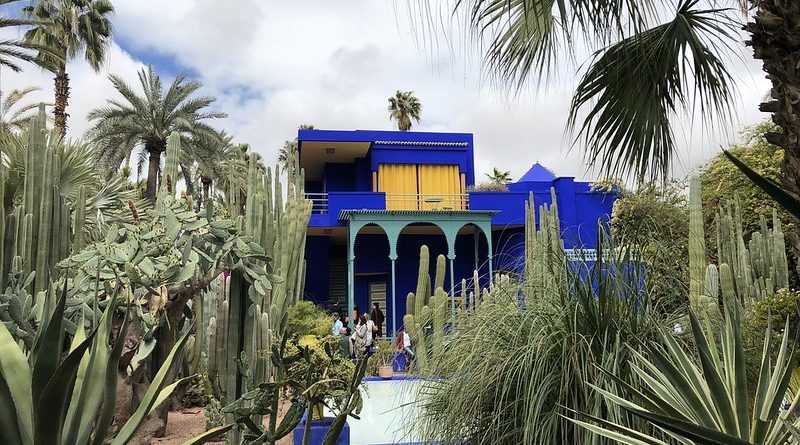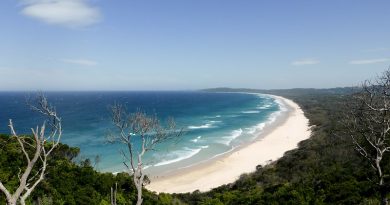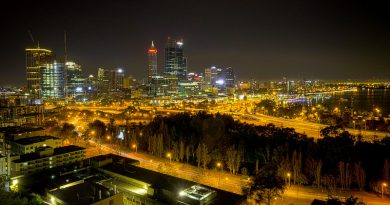The Top Ten Things to do in Marrakech
Majorelle Garden
One of the city’s most recognisable landmarks, the Majorelle Garden was established by Jacques Majorelle, a French artist in the early 20th Century. A beautiful, picturesque botanical garden, it also features a villa in the Cubist mold designed by Paul Sinoir. The villa is known for its distinct blue exterior. The serene nature of the garden and the aesthetically pleasing villa have made it an increasingly popular tourist destination. The gardens and villa were notably owned by famous fashion designer Yves St. Laurent, who eventually opened them to the public.
Yves St. Laurent Museum
Located within the Majorelle Garden complex, the Yves St. Laurent Museum is one of Marrakech’s newest cultural fixtures having opened in 2017, yet has quickly become one of the city’s essential tourist destinations. Featuring a striking design by acclaimed architecture firm Studio KO, the museum houses an extensive research library, a permanent exhibition dedicated to the designer’s couture, a restaurant and a performance space. An important cultural institution already, the museum pays tribute to the iconic designer’s long relationship with the city.
Berber Museum
Another essential feature of the Majorelle Garden complex, the Beber Museum is a small museum dedicated to the native culture of Morocco, featuring several anthropological artefacts. The museum is known for its impressive jewellery collection and its in-depth information about domestic life in Morocco. The museum’s exterior retains the distinct blue associated with the Majorelle complex. Lesser known than the other features of the Majorelle Gardens, it is certainly worth your time.
Jemaa el-Fna
The busiest and largest city square in the whole of Africa, Jemaa el-Fnaa is the city’s beating heart, having survived the entirety of the city’s lifetime. Located in the medina quarter, the city’s most historic neighbourhood, Jemaa el-Fnaa is constantly awash with bustling activity throughout the day. It is most busy during the evenings where there are several food stalls, offering visitors a chance to sample authentic local cuisine. However, the square is still worth visiting during the day when there are a number of forms of entertainment. These include snake charmers and dancing performances. Perhaps better than any other place in Marrakech, Jemaa el-Fna reflects the city’s frantic, fast-paced atmosphere.
Hammam
The Hammam Experience is by no means one exclusive to Marrakech, but is without a doubt an essential thing to do whilst visiting the city. A good way to immerse yourself in the city’s culture, residents regularly visit public bathhouses for ritualistic, relaxing or social reasons. Many of these hammams also function as spas. There are a plethora of options to choose from with ‘La Mamounia’ arguably the most popular amongst tourists. There are plenty of choices catering to different desires and interests.
Saadian Tombs
Amongst the most iconic historic sites in the city, the Saadian Tombs are adjacent to the Kasbah Mosque, one of the most important places of worship in the city. The tombs are one of Marrakech’s top tourist attractions, noted for their visual beauty and painstakingly detailed mosaics. The tombs were built towards the end of the 16th Century under the reign of Ahmad al-Mansur of the Saadian Dynasty, for which they were named. The tombs contain the remains of over sixty members of the dynasty over three separate rooms. One of the most spectacular sights in the city and an important historical relic of Marrakech, the tombs are an unmissable fixture of the city.
Museum of Moroccan Arts/Dar Si Said
Located in a spectacular palace, the Dar Si Said Museum is one of Marrakech’s finest museums. Its opulent backdrop aside, the Dar Si Said Museum is a vast treasure trove of artworks and artefacts from the entirety of the country’s extensive history. Items on display range from weaponry to jewellery. Furthermore, there are rooms in the museum which recreate domiciles of the country’s past. Few places give better insights into the country’s culture and history.
Ben Youssef Madrasa
A former educational building dating back to the Marinid Period of the 14th Century, the Ben Youssef Madrasa was named for Almoravid ibn Yusuf, a 12th Century Sultan and a key figure in the development and prosperity of Marrakech. Functioning well into the 20th Century, the school was closed in 1960 only to be reopened as a cultural and historical landmark. The Madrasa is now one of the city’s more popular sites, and for good reason. One of the most picturesque buildings in Marrakech, the Madrasa is known for its distinct courtyard and lavishly, meticulously decorated walls. It is without a doubt one of the most fascinating historical buildings in the city.
Bahia Palace
Literally translated to ‘Palace of Brilliance’, this opulent palace dates back to the 19th Century. Built under the orders of the Grand Vizier of the Sultan of the time Si Moussa, who intended to use it to house his many concubines. The palace is a vast, sprawling complex covering two acres containing hundreds of rooms. Now a museum, the Palace is one of the city’s most magnificent buildings, well-known for its opulent design, large courtyard and beautiful gardens.




